February 15, 2021 by Rodrigo J. Gallego |
Working as an experience learning designer is like being a chef. In order to design your experience, you need to carefully select your ingredients, spices, and carefully blend them to obtain an original powerful learning experience. But which are the key ingredients every professional should take into account to “cook” a learning experience?
In this article, I will share my recipe to design memorable learning experiences with you.
Not all experiences “print” memories in our memory. Therefore, it is reasonable to ask ourselves: what do we need to take into account to create them? Let’s dive in.
Note: I enjoy having playback music while I read so I curated a playlist with ten songs that will “walk” you through reading and reflecting on this article 😀
Please, before you start reading, I want you to remember an important moment in your life, whatever comes to your mind first (there is no right nor wrong answer). Write that memory on a little piece of paper and save it in your pocket. We are going to use it later 😉

Memory is unfair.
That is the maxim of this article: memory is unfair. Our brain tends to¨cherry-pick¨. Every time we remember an important experience in our life, our brain usually only selects the most intense moment(s) of the experience and the ending. This phenomenon is called the “Peak-end Rule”. We tend to remember peaks, intense moments (good or bad, happy or sad it does not matter as long as they are peak moments) and the ending. As experience learning designers we need to build peaks and endings to increase the chances of creating a strong memory in our students. In this article, I want to focus on how to build peaks.
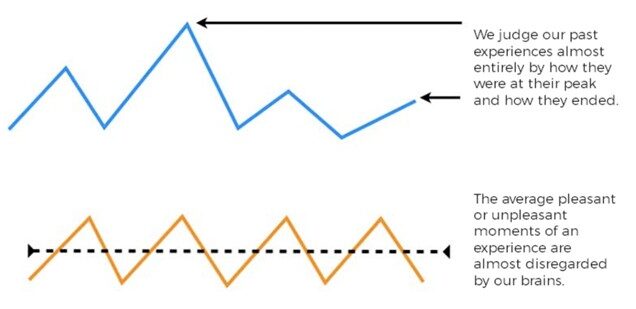
Challenge: It’s all about the peaks
When we design an experience, we usually tend to take into account how to make the participants or students feel comfortable instead of designing a peak moment. For example, if you are preparing a class, you will make sure you have enough chairs, the right PPT presentation, your personal notes, etc but, if all of those things go great, are we still creating a memory? No, we are not. Unfortunately, great is not enough. To create a memorable learning experience you need intense moments, not just great moments.
So, which are the key ingredients for building peaks?
There are (at least) 4 important ingredients. You should use and blend them according to the learning outcome you want to achieve. It is a tricky task, so choose your ingredients wisely. It is important to realize you do not need to use all of them every time. Each ingredient is explained with projects we did at Eidos Global (a learning experience foundation I co-founded in 2012). If you want to deepen your knowledge on these ideas, I suggest reading the books “The Power of Moments” by Chip Heath & Dan Heat and, “Designing Experiences” by J. Robert Rossman and Mathew D. Duerden.
Let’s jump into the kitchen and start cooking!
1st Ingredient: Breaking the Script
Our lives come with scripts. Every time we go to a certain place (from a Lollapalooza concert, school or a supermarket) we have an expectation of what is about to happen. We call this a script. What could happen if we break it? What could happen if we change (sometimes even dramatically) the expectation on what is (supposedly) about to happen? Breaking the script with a powerful disruptive idea increases the possibility of creating a peak and therefore, a memory.
At Eidos Global, we are working on the learning experience design of an interactive museum in Mumbai, India. Participants, young minds of 8 to 13 years old, will have to go through different stages to come up with solutions for the environmental problems Mumbai has. Part of our job consists of designing how the participants will interact with the different exhibitions at the museum in order to learn more about sustainability and the SDGs.
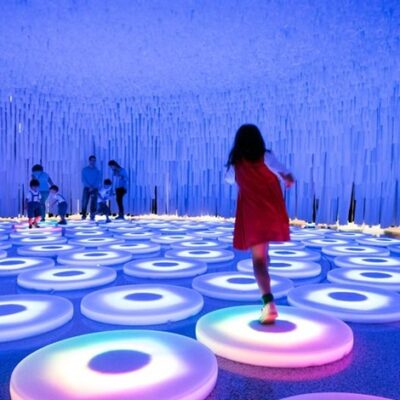
The script we are all used to “reading” in museums is that they are solemn places where you need to remain quiet: talking to a stranger about how we feel about a certain piece of art is unusual. We want to break that. We want to design an interactive museum where people who don’t know each other can connect and share their feelings. Therefore, we created a different set of rules that can trigger these human connections. Each room will have different moods and the rules for each room will vary according to the interaction we want to encourage. In some of them, we will even ask participants to speak loudly, in order to break the ice between strangers. We will encourage people to have stickers on their chest that say “I’m ready to talk”. With these, “little” changes we are breaking the script and creating a peak in the experience.
If you want to know more about how to add radical changes to museums I suggest reading the book “Participatory Museum” by Nina Simon.
2nd Ingredient: Revelations
These are insightful moments where the truth reveals upon the students. It’s the “Aha!”, “Eureka” moment. The “status quo” of a deep personal belief changes dramatically. Through this peak, we help them to rewire a certain belief they had from the world. These revelations cannot be explained to students; they need to go through an experience to understand it. It is a personal experience. The concept of “experiential learning” is the core of this ingredient. We need to create an experience that induces participants into an epiphany moment.
Last year, we designed a workshop about diversity for a global tech company. The idea was that each participant could explain how to make the company more inclusive and diverse. The first challenge we had was communication: even an important concept like “diversity” has different interpretations on what it really means among different people. But, how can we make participants understand this gap they have in the same concept? By creating an intentional space where revelations flourish.
In this case, the activity we prepared was called “The Sun”. Participants wrote the word “diversity” on a piece of paper and drew a circle around it. They have to write 5 words they believe were linked to the concept of “diversity”. When they finished writing, we asked all the participants how many people in the group they expected to have written down the same words. The 80 participants were really confident and affirmed to have at least four coincidences. They only had one. The crowd was shocked and the “revelation moment” appeared: how were they going to start working on improving the “diversity” of the company if they were not even talking about the same concept?
We managed to create a learning peak moment based on this revelation.
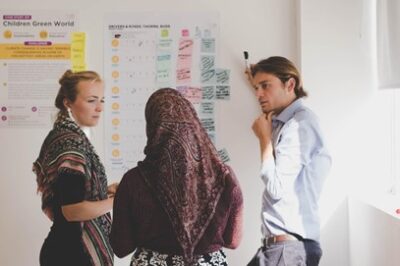
3rd Ingredient: Playing with senses
We have to play with our 5 senses. Empowering or blocking them to create a new tool to generate a peak. Usually, when we are in the classroom we tend to forget we have more senses than just eyes and ears.
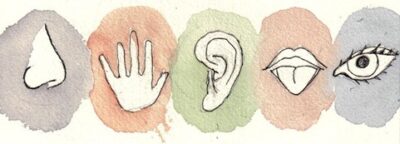
For 3 years, Eidos Global worked together with Minerva University in designing experiences for students from all over the world to immerse them into the history, idiosyncrasy, challenges, and culture of Buenos Aires, Argentina. Argentina has the highest ranking of physical proximity: Argentineans hug a lot, share straws when they drink mate, talk really close to each other… In 2019, Eidos and Minerva co-designed together a Blindfolded Tango class for students to understand this aspect of the Argentinean cultural DNA. The experience consisted of having a Tango class in a dark room and through the dance, students experienced the Argentinean physical proximity. By blocking one sense (vision) we empower another one (touch). Students from different cultures reflected on how they felt, what it meant and how shocking (or not) could be for them according to their culture.
4th Ingredient: Moments of exposure
These are moments where we add a little bit of productive pressure. The idea is to design a moment in which students need to present or pitch their project, idea, etc. before an audience (large or small, it does not matter). Also, you can have “micro exposure moments”. For example, if you are creating an icebreak dynamic and you ask participants to introduce themselves, this is also a way to create peaks.
The first project we designed at Eidos, 13 years ago, was related to the UN Models: an educational simulation in which students embodied a country to defend it and try to convince others of their country’s point of view. Usually, students must stand before an audience, wear a suit and there is also an UN scenography. These moments are important because it gives students an intentional space designed for them to showcase their knowledge.
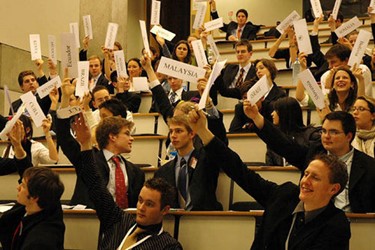
Imagine if you were a basketball player and never had the game day and you will be practicing forever… that does not sound so appealing, right?
That is why we need to have more moments of exposure.
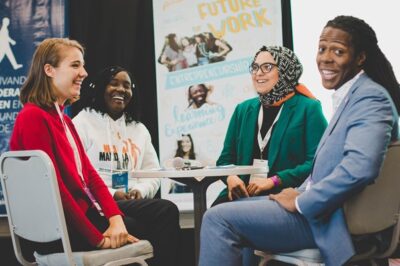
Finale
At the beginning of the article, I asked you to write an important memory you had and save it in your pocket. Now, I would like you to take it out, read it, and analyze:
- Why was it important?
- Did it have any of the elements we mentioned in the article?
- Do you think it could have been a more powerful memory if you would have used any of the tools we talked about?
Please, let me know your answers in the comments below!
4 Books
Which books should you read
- The Power of Moments by Chip Heath & Dean Het
- The Experience Economy by B. Joseph Pine II & James H. Gilmore
- Designing Experiences by J. Robert Rossman and Mathew D. Duerden
- The Art of Gathering by Priya Parker
I hope this article created a peak moment in your memory and you take it into account when designing new learning experiences for your students!
Please, if you have any questions or comments, feel free to write to me at rodri@eidosglobal.org or come on and say hi at Linkedin & Instagram, I would like to read your ideas.

